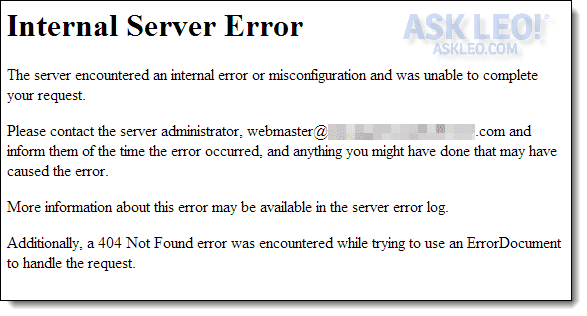Buck deer calls are an essential tool for any hunter looking to increase their chances of success in the field. Whether you’re a seasoned veteran or just starting out, understanding how to use buck deer calls can give you a significant advantage.
In this comprehensive guide, we’ll cover everything you need to know about buck deer calls, from the different types available to the most effective calling techniques. We’ll also provide tips on caller positioning, decoy use, and safety considerations.
Hunting Techniques with Buck Deer Calls


Deer calls are a highly effective way to attract bucks during the rut, and can be used in a variety of hunting situations. There are three main types of deer calls: rattling, grunting, and tending.
Rattling is the most aggressive type of deer call, and is used to simulate the sound of two bucks fighting. Rattling can be effective in attracting bucks from a long distance, but it is important to use it sparingly, as it can also spook deer.
Grunting is a more subtle type of deer call, and is used to simulate the sound of a buck tending to a doe. Grunting can be effective in attracting bucks from a shorter distance, and is less likely to spook deer than rattling.
Tending calls are used to simulate the sound of a doe in heat. Tending calls can be effective in attracting bucks from a long distance, and are often used in conjunction with rattling or grunting.
Tips for Using Deer Calls
- Use the right call for the situation. Rattling is best used for attracting bucks from a long distance, while grunting and tending calls are more effective for attracting bucks from a shorter distance.
- Use the call sparingly. Overusing a deer call can spook deer.
- Be patient. It may take some time for a buck to respond to your call.
- Practice your calling skills. The more you practice, the better you will become at using deer calls.
Types of Buck Deer Calls


Buck deer calls are an essential tool for hunters looking to attract and call in bucks during the hunting season. There are various types of buck deer calls available, each with its advantages and disadvantages.
The most common types of buck deer calls are:
Mouth Calls
Mouth calls are the most basic type of buck deer call and are relatively easy to learn to use. They are made of a thin piece of plastic or metal that is placed in the mouth and blown into. Mouth calls can produce a variety of sounds, including grunts, bleats, and snorts.
Advantages:
- Inexpensive
- Easy to learn to use
- Can produce a variety of sounds
Disadvantages:
- Requires practice to master
- Can be difficult to use in windy conditions
Diaphragm Calls
Diaphragm calls are another popular type of buck deer call. They are made of a thin piece of latex that is placed over the back of the tongue and vibrated. Diaphragm calls can produce a wide range of sounds, including grunts, bleats, snorts, and estrus bleats.
Advantages:
- Can produce a wide range of sounds
- Easy to conceal
- Can be used in windy conditions
Disadvantages:
- Requires practice to master
- Can be difficult to use for beginners
Electronic Calls
Electronic calls are the most expensive type of buck deer call, but they are also the easiest to use. They are battery-operated and can produce a variety of sounds, including grunts, bleats, snorts, and estrus bleats.
Advantages:
- Easy to use
- Can produce a wide range of sounds
- Can be used in windy conditions
Disadvantages:
- Expensive
- Can be bulky to carry
Choosing the Right Buck Deer Call
The type of buck deer call you choose will depend on your hunting style and experience level. If you are a beginner, you may want to start with a mouth call or a diaphragm call. These calls are relatively easy to learn to use and can be effective in a variety of hunting situations.
If you are an experienced hunter, you may want to consider using an electronic call. Electronic calls can produce a wide range of sounds and can be used in windy conditions. However, they are more expensive and can be bulky to carry.
Call Sequences and Strategies


Effective call sequences are crucial for attracting bucks during the hunting season. Understanding buck behavior and vocalizations is essential for designing successful call sequences. Bucks communicate through various vocalizations, including grunts, snorts, bleats, and rattling. Each vocalization conveys a specific message, and hunters can use this knowledge to mimic these sounds and entice bucks into range.
Pre-Rut Call Sequences
During the pre-rut, bucks are actively searching for does. Hunters should use call sequences that mimic the sounds of a doe in heat. These sequences typically involve a series of short, soft grunts followed by a longer, louder grunt. Hunters can also use bleats to imitate the sounds of a doe in distress.
Calling in buck deer can be a thrilling experience, but it’s essential to be prepared for the aftermath. After a successful hunt, consider treating yourself to some delectable bbq deer ribs . The smoky, tender ribs will complement the thrill of the chase and provide a satisfying end to your hunting adventure.
Buck deer calls are not just for attracting deer during the hunt; they can also evoke memories of the chase while you savor the fruits of your labor.
Rut Call Sequences, Buck deer calls
During the rut, bucks are highly aggressive and territorial. Hunters should use call sequences that mimic the sounds of a buck challenging another buck. These sequences typically involve a series of loud, aggressive grunts followed by a rattling sound. Hunters can also use snorts to imitate the sounds of a buck chasing a doe.
Whether you’re a seasoned hunter or just starting out, mastering the art of buck deer calls is crucial. From rattling antlers to doe bleats, understanding the nuances of these calls can significantly increase your chances of success. However, choosing the right firearm for deer hunting is equally important.
If you’re debating between the 243 and 25-06 calibers, check out this comparison . Returning to buck deer calls, mastering these techniques can help you attract bucks from afar, making your hunting experience more rewarding.
Post-Rut Call Sequences
During the post-rut, bucks are less active and less responsive to calls. Hunters should use call sequences that are more subtle and less aggressive. These sequences typically involve a series of soft grunts or bleats. Hunters can also use rattling to imitate the sounds of a buck sparring with another buck.
| Hunting Situation | Call Sequence |
|---|---|
| Pre-Rut | Short, soft grunts followed by a longer, louder grunt |
| Rut | Loud, aggressive grunts followed by a rattling sound |
| Post-Rut | Soft grunts or bleats |
Caller Positioning and Decoys


Caller positioning is crucial for successful buck calling. The goal is to position yourself in a location where the buck is likely to approach, without spooking it. This typically means setting up downwind of the buck’s expected path, so that your scent will carry towards it.
It’s also important to find a spot with good visibility, so that you can see the buck approaching and respond accordingly.
Decoys can be an effective way to enhance the effectiveness of calling. A well-placed decoy can attract the buck’s attention and draw it closer to your calling position. When choosing a decoy, select one that is realistic and lifelike. Position the decoy in a natural-looking spot, such as a clearing or near a food source.
Tips for Choosing and Positioning Decoys
- Choose a decoy that is realistic and lifelike.
- Position the decoy in a natural-looking spot, such as a clearing or near a food source.
- Set up the decoy downwind of the buck’s expected path.
- Use multiple decoys to create a more realistic scene.
- Be patient and wait for the buck to approach.
Safety Considerations and Ethics
Buck deer calling can be an exciting and rewarding hunting technique, but it’s crucial to prioritize safety and adhere to ethical considerations while using these calls.
Hunter Safety
- Always wear blaze orange or other high-visibility clothing while calling.
- Be aware of your surroundings and identify potential escape routes.
- Never call while sitting or standing in a direct line of sight with other hunters.
- Be cautious of using calls near roads or other areas with potential for human traffic.
- Carry a whistle or other signaling device to alert others in case of an emergency.
Ethical Considerations
- Only use calls during legal hunting seasons and in areas where hunting is permitted.
- Respect other hunters and avoid calling in areas where they are actively hunting.
- Avoid excessive or repetitive calling, as this can disturb deer and other wildlife.
- Never use calls to harass or attract deer for non-hunting purposes.
- Follow all applicable hunting regulations and guidelines.
Responsible Hunting Practices
- Know your target and identify the species you are calling.
- Practice responsible shot placement and only take ethical shots.
- Field dress and process your harvest promptly and humanely.
- Respect the land and minimize your impact on the environment.
- Report any violations or unethical hunting practices to the appropriate authorities.
Final Thoughts
With the right knowledge and practice, you can master the art of buck deer calling and significantly increase your chances of success in the field. So whether you’re a seasoned veteran or just starting out, be sure to give buck deer calls a try.
You won’t be disappointed.
Answers to Common Questions: Buck Deer Calls
What are the different types of buck deer calls?
There are three main types of buck deer calls: mouth calls, diaphragm calls, and electronic calls. Mouth calls are the most affordable and easiest to use, but they require some practice to master. Diaphragm calls produce a more realistic sound, but they can be more difficult to use.
Electronic calls are the most expensive, but they offer the most versatility and realism.
What are the most effective calling techniques?
The most effective calling techniques vary depending on the time of year and the specific deer you’re trying to attract. However, some general tips include using a variety of calls, varying the volume and pitch of your calls, and being patient.
What are some safety considerations when using buck deer calls?
Always be aware of your surroundings when using buck deer calls. Make sure you’re in a safe location and that you’re not calling in a direction where other hunters may be. Also, be sure to wear blaze orange during hunting season.







